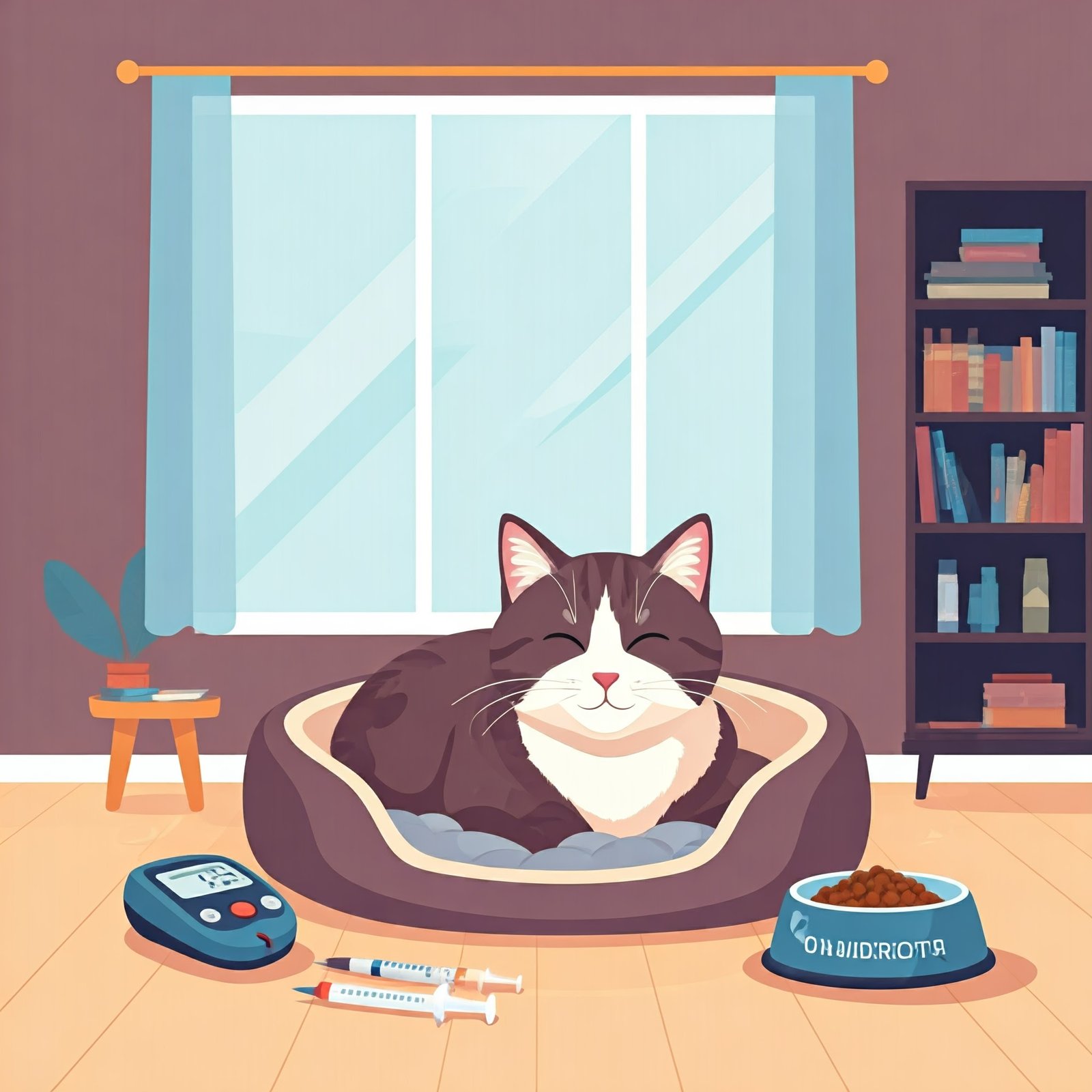What Does It Mean When a Cat is Diabetic?
A human cat can also suffer from diabetes, considered a severe health issue and a life-threatening problem for your pet.
Diabetics indicate the amount of sugar a cat has in his blood, and he cannot transfer it into the cells, which can increase the sugar level in the cat’s blood.
Even diabetic cats can live a good life if they receive proper treatment and proper care in their home.
Adopting a Diabetic Cat
When adopting a diabetic cat, remember that this is a situation (in most cases) that your cat may face due to their lifestyle, which necessitates additional knowledge and effort on your part as the cat’s parent. It will also have an impact on your wallet. As most diabetic cats are middle-aged or older, there will also be different underlying health conditions that need to be handled.
It’s far more critical for a pet owner to study the cat’s medical records (if acknowledged) and decide what the first few vet visits are, monthly prices, long-term care, and value concerns will be. For cats diagnosed with Diabetes Mellitus (DM) for the first time, extra care and testing are required to set you up for success. This is regularly attributed to finding the proper kind, dose, and frequency of insulin.
Things to Know When Adopting a Diabetic Cat
- How long has the cat been diagnosed with DM?
- What sort of insulin and insulin syringes are required?
- Is the cat fed a specific diet, considering that it is inside the haven, and if so, how much and how often?
- How often and how much insulin is given (the cost varies; expect to pay anywhere between INR 1000 – 1000 for a 10 ml vial).
- Beyond scientific records, any diagnostics or other remedies furnished, urine checking out and cultures, blood glucose curves, fructosamine testing, and baseline blood paintings.
- Do its contemporary clinical records indicate cataracts or neuropathy, and does the cat suffer from persistent pancreatitis?
- Is the cat well-regulated?
- Does your refuge provide any in-residence, low-value checking out, coupons, or discounted hospital treatment to help with the related fees?
Managing Your Diabetic Cat
Maximum cats can be controlled with twice-daily insulin injections administered through the skin, and some environmental factors, including
- Your cat must eat before receiving insulin injections, which may necessitate more time in the morning on your part.
- Insulin bottles and components need to be taken care of nicely.
- If home tracking is elected, keep track of the cat’s daily blood sugar numbers and its daily recurring and behavioural patterns.
Cost for a Diabetic Cat
Caring for a diabetic cat may be profitable. Still, it’s also essential to be fiscally responsible and understand the needed expenses for correct care and management. Initial visits and diagnostics are often the most expensive, mainly because the costs are incurred in an extraordinarily brief period.
- Insulin: there are numerous different sorts, which include Vetsulin, Glargine, and Glipizide (oral choice), and costs are variables based on the kind and frequency of usage.
- Insulin syringes: ensure that the type of needle fits the insulin given. For example, Vetsulin calls for U-40 syringes, and Glargine requires U-100 syringes. The fees are variable.
- Sharps box: If needed, in line with national regulations to eliminate used syringes,
- At-home blood glucose monitoring device: The AlphaTrak 2 or the FreeStyle Libre display
- Weight loss plan: A proper eating regimen is suggested through your veteran
Long-term Management
The long-term management of your diabetic cat includes a healthy and steady routine:
- A weight loss plan and workout.
- Scheduled feedings (which include treats).
- Insulin administration.
Your diabetic cat is extra liable to infections and will take longer to heal, so preserving it with habitual test-U.S.And keeping it away from others is crucial. Be patient as your cat acclimates to its new home.
The transition from refuge life to home existence can be pretty traumatic, so pay close attention to your cat’s behaviours and electricity levels, as even high-quality, well-managed cats can relapse. Urinary accidents, reduced appetites, and seclusion can be visible during this transition. Your cat must be tested within a few days of adoption, as follow-up visits and cooperation with your veterinarian may be required for successful diabetes management.
Read- https://www.talkytails.com/healthy-ways-to-keep-your-pet-warm-and-active/



